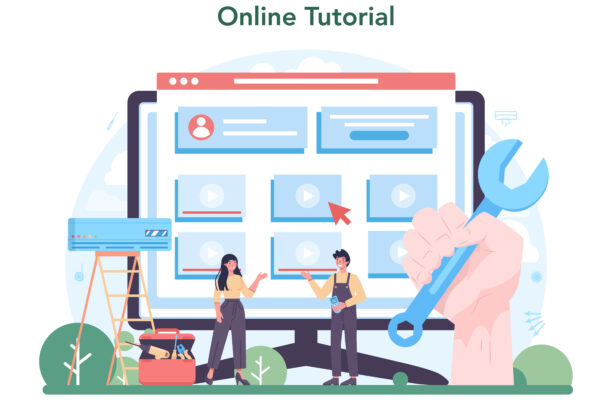Rapport refers to a positive and harmonious relationship or connection between individuals. It is characterized by mutual understanding, trust, and a sense of empathy. In the context of education, building rapport with students involves establishing a supportive and comfortable environment that fosters effective communication, collaboration, and engagement.
When there is rapport between a tutor and students, there is a strong sense of connection and understanding. Students feel comfortable expressing their thoughts, asking questions, and seeking guidance. Rapport creates an atmosphere where students feel valued, heard, and respected, leading to increased motivation and a willingness to actively participate in the learning process.
Building rapport involves various elements, including active listening, open communication, and a genuine interest in students’ ideas and perspectives. Tutors who successfully build rapport with their students demonstrate empathy, understanding, and a willingness to adapt their teaching approach to meet individual needs. This connection helps create a positive learning environment where students feel supported, motivated, and inspired to reach their full potential. Here are some tricks and techniques to build rapport.
Create a Welcoming Environment
Warm Greetings and Positive Tone
Starting each session with a warm greeting sets a positive tone for the class. It helps create a friendly and welcoming atmosphere that encourages students to engage and participate actively. Using a positive and enthusiastic tone throughout the session enhances the overall learning experience and helps build rapport with students.
Visually Appealing Virtual Backgrounds or Organized Workspaces
In the virtual classroom, tutors can utilize visually appealing virtual backgrounds or set up an organized workspace. Virtual backgrounds can add
visual interest and create a professional backdrop. An organized workspace, free from distractions, demonstrates professionalism and helps students focus on the content being delivered.
Utilize Icebreakers and Introductions
Icebreaker Activities to Facilitate Introduction
Icebreaker activities are a great way to break the ice and encourage students to interact with one another. These activities can be fun and interactive, such as introducing themselves with a unique fact or participating in a virtual scavenger hunt. Icebreakers promote a sense of community and help students feel more comfortable engaging in discussions.
Sharing Interests and Course Goals
Allowing students to share their interests and discussing course goals helps create a personal connection. Students can share their passions, hobbies, or experiences related to the subject matter. Discussing course goals and expectations establishes a sense of purpose and direction for the class, fostering student engagement and motivation.
Active Listening and Responsive Communication
Giving Students Full Attention
Active listening involves giving students your full attention during virtual interactions. It requires focusing on their contributions, maintaining eye contact, and being attentive to their non-verbal cues. Active listening demonstrates respect and shows students that their thoughts and opinions are valued.
Prompt and Thoughtful Responses
Responding to student questions, comments, and concerns in a timely manner is crucial for building rapport. Prompt responses show that the tutor is engaged and invested in the learning process. Thoughtful responses demonstrate a genuine interest in students’ ideas and provide valuable feedback or guidance.
Providing Timely Feedback
Timely feedback on assignments, assessments, or class discussions is essential for student progress. It helps students understand their strengths and areas for improvement, allowing them to make necessary adjustments. Providing specific and constructive feedback promotes a sense of support and encourages continuous learning.
Use Visual Engagement
Incorporating Visual Aids and Multimedia
Visual aids, such as slides, charts, or infographics, enhance comprehension and engagement. They can present information in a visually appealing and organized manner, making complex concepts more accessible. Incorporating multimedia elements like videos, animations, or interactive tools adds variety and interactivity to the virtual classroom.
Screen-Sharing for Content Demonstration
Screen-sharing is a powerful tool for demonstrating content in real-time. Tutors can share their screen to walk students through examples, show relevant websites or applications, or present visual resources. Screen-sharing provides a more immersive learning experience, allowing students to follow along and visualize the concepts being discussed.
Non-verbal Cues for Connection (Facial Expressions, Gestures)
Non-verbal cues play a significant role in building rapport and connection. Tutors can use facial expressions, gestures, and body language to convey emotions, enthusiasm, and engagement. Smiling, nodding, or using hand gestures help establish a sense of presence and connection, even in the virtual environment.
Encourage Collaboration and Peer Interaction
Group Projects and Breakout Sessions
Collaborative activities like group projects or breakout sessions promote interaction and cooperation among students. These activities foster teamwork, critical thinking, and problem-solving skills. Tutors can assign tasks that require students to work together, exchange ideas, and learn from each other’s perspectives.
Facilitating Discussions and Idea Sharing
Encouraging students to actively participate in discussions helps create a dynamic and engaging virtual classroom. Tutors can pose open-ended questions, initiate debates, or facilitate peer-led discussions. Students can share their thoughts, ask questions, and contribute to the collective learning experience.
Peer Feedback and Learning from Perspectives
Creating a culture of peer feedback allows students to learn from each other’s perspectives and insights. Tutors can encourage students to provide constructive feedback to their peers, promoting critical thinking and self-reflection. Peer feedback encourages active engagement and helps students develop a deeper understanding of the subject matter.
Personalize Instruction and Communication
Addressing Students by Name
Personalizing communication by using students’ names establishes a sense of individual connection. When tutors address students by their names, it shows that they are valued and recognized as individuals. This simple act can make students feel more comfortable and engaged in the virtual classroom.
Understanding Individual Interests and Learning Styles
Taking the time to understand students’ interests, strengths, and preferred learning styles allows tutors to tailor their instruction to meet individual needs. By adapting teaching strategies and materials to cater to students’ preferences, tutors can create a more personalized learning experience that resonates with each student.
Offering Personalized Feedback and Guidance
Providing specific and personalized feedback is crucial for students’ growth and development. Tutors can offer individualized guidance and support based on each student’s progress and learning goals. Personalized feedback acknowledges students’ efforts and challenges while offering insights and suggestions for improvement.
Use Technology Creatively
Exploring Educational Technology Tools
Embracing educational technology tools expands the possibilities for engagement and interaction in the virtual classroom. Tutors can explore a variety of tools such as interactive whiteboards, virtual simulations, or gamified platforms. These tools offer opportunities for active learning, collaboration, and creativity, enhancing students’ overall learning experience.
Leveraging Online Collaboration Tools
Online collaboration tools enable students to work together, share ideas, and collaborate on projects. Tutors can encourage the use of tools like virtual whiteboards, shared document platforms, or project management tools. These tools facilitate seamless collaboration and foster a sense of teamwork and shared responsibility among students.
Multimedia Elements for Engagement
Leveraging multimedia elements like audio or video recordings can make learning more engaging and dynamic. Tutors can create instructional videos, podcasts, or audio presentations to deliver content in different formats. Incorporating multimedia elements helps cater to various learning styles and enhances students’ overall learning experience.
By implementing these strategies and techniques, tutors can build rapport and connection with online students. These efforts create a positive and engaging virtual classroom environment where students feel valued, supported, and motivated to actively participate in their learning journe




Leave your comment
You must be logged in to post a comment.